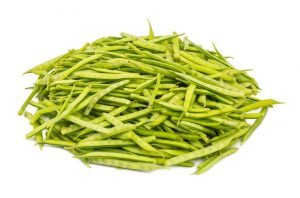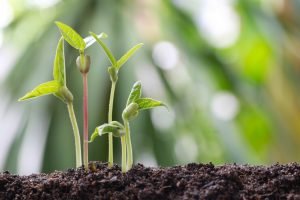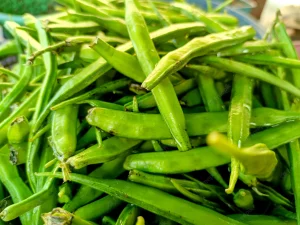How to Grow Cluster Beans from Seed to Harvest
In this article I have explained How to Grow Cluster Beans from Seed to Harvest, which helps every farmer and home gardener to gain the knowledge on
- Available verities of Cluster Beans.
- Seed germination time.
- Suitable soil and weather conditions.
- Field preparation and planting distance.
- Fertilizer and Water Management.
- Required seed per acre and expected yield per acre.

Cluster Beans(Cyamopsis tetragonolobus L) is a plant belonging to leguminous family. This plant can survive in extreme rainfall conditions. This plant is native to West Africa and India. The tender fruits are used as a vegetable.
Cluster beans are rich in fibers and potassium. They include fewer calories and fat and more plant proteins. They enhance heart health by lowering cholesterol, maintaining blood pressure and vessel blood flow, and lowering bad cholesterol.
Guar beans contain calcium and phosphorus minerals that strengthen bones and improve bone health. Guar beans have numerous vitamins, including vitamins A, C, K.
Uses:
- Mostly in South India, tender beans are used as a vegetable
- A valuable glue is made from the seeds of some varieties of cluster beans. This glue is used worldwide in the textile, paper, cosmetics and oil industries.
- This glue is used as a detonator for explosives.
- This crop is also used as raw fertilizer to improve soil physical and chemical properties
- It is also used in pharmaceutical preparations
Weather:
Cluster beans is a tropical crop. Suitable for growing in areas with low rainfall and high temperature. Can’t tolerate the snow.
Soils:
This crop can be grown in all well drained areas. Soils with a Soil PH levels 7.5–8.0 are suitable. Heavy soils of high density are not suitable.
Crop Season:
Kharif : June – July
Summer : January – February
Varieties:
1 KGs of seeds Contains approximately 16000 seeds
Seed Germination time is 20 to 30 Days
Pusa Mausami: Selected and developed from North Indian native variety. Rainy season is suitable for this crop. The first harvest occurs 70-80 days after sowing. The pods are green in color with a length of 10-12 cm. This plant grows with branches.
Pusa Sadabahar: It is a high yielding variety suitable for kharif and summer crops, developed by Indian Agricultural Research Institute, New Delhi. The first harvest is done 45-50 days after sowing the seeds. The plant grows without lateral branches. The pods are green in color with a length of 12-13 cm.
Pusa Navabahar: This variety is a hybrid of Pusa Mausami and Pusa Sadabahar. Fruit is like Pusa Mausami and plant growth is like Pusa Sadabahar. This variety is also suitable for kharif and summer crops.
Gauri: This is a type of private company. Suitable for kharif and summer crops.
Soil Preparation:

The land should be thoroughly ploughed and add 8 tons of cattle manure fertilizer per acre. In case of kharif crop, the beds should be made at a distance of 45 cm
Seed Per Acre:
Seed Rate: 12-16 kg of seed per acre is required
Harvest: 40 days after sowing the seeds
Yield: 2.0-2.5 tones/acre
Planting distance:
Kharif crop : 60 x 15 cm.
Summer crop : 45 x 15 cm.
Water management:
Water should be given as soon as the seeds sown. It should be given again on the 3rd day. After that water drops should be given at 7-10 intervals.
Harvesting:

Care should be taken to avoid water logging in the field. To avoid spreading any disease to other plants, mix 3 grams of copper oxychloride per litter of water and add to the entire soil around the plant.
Crop rotation should be followed. Harvest the tender beans periodically and sent to the market otherwise the quality of the beans is reduced and will not get the good price in the market.
Yield:
2.0-2.5 tones/acre
Follow WalPencil to get to know cultivation tips for other vegetable crops like Tomato Cabbage Eggplant Okra etc…..
